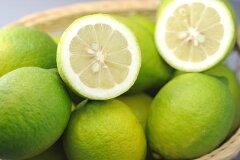Japanese page
Nutrient content per 100 g
Delicious season
Green lemon
| ① | ② | ③ | ④ | ⑤ | ⑥ | ⑦ | ⑧ | ⑨ | ⑩ | ⑪ | ⑫ |
|---|
lemon
| ① | ② | ③ | ④ | ⑤ | ⑥ | ⑦ | ⑧ | ⑨ | ⑩ | ⑪ | ⑫ |
|---|
* Display the yearly calendar with each number
Commentary on vegetables
- Many imports are distributed throughout the year
- Domestic products are harvested in blue around October (green lemon)
- American and Chilean lemons account for 70%
- Wax is used for imported products to prevent mold etc.
- If you want to use leather, try to choose domestic products as much as possible
- Abundant in citric acid, which has a fatigue recovery effect
Preservation method
- Store in a plastic bag to avoid drying
- When storing at room temperature, make it a week or so.
(Beware of mold) - After cutting, wrap in wrap and store in refrigerator
- Squeeze fruit juice and store frozen
- After slicing, it can be sealed and stored frozen
recipe
- dressing
- Marinated
- Vinegar
- dessert
- juice
- Cocktails
- Dry lemon
Food composition table
Per 100g edible portion
lemon(raw)whole
| Waste rate | 3% |
| Energy | 54㎉ |
| moisture | 85.3g |
| Protein | 0.9g |
| Lipid | 0.7g |
| Carbohydrate | 12.5g |
| Sodium | 4㎎ |
| Potassium | 130㎎ |
| Calcium | 67㎎ |
| Magnesium | 11㎎ |
| Rin | 15㎎ |
| iron | 0.2㎎ |
| Zinc | 0.1㎎ |
| Copper | 0.08㎎ |
| Manganese | 0.05㎎ |
| Lodine | – |
| Selenium | 1㎍ |
| Chromium | – |
| Molybdenum | 1㎍ |
| Vitamin A(Retinol) | – |
| Vitamin A(β-carotene) | 7㎍ |
| Vitamin D | – |
| Vitamin E(Tocopherol α) | 1.6㎎ |
| Vitamin K | – |
| Vitamin B1 | 0.07㎎ |
| Vitamin B2 | 0.07㎎ |
| Niacin | 0.2㎎ |
| Vitamin B6 | 0.08㎎ |
| Vitamin B12 | – |
| Folic acid | 31㎍ |
| Pantothenic acid | 0.39㎎ |
| Biotin | 1.2㎍ |
| Vitamin C | 100㎎ |
| Dietary fiber(aggregate amount) | 4.9g |
Quoted from the Japanese food standard composition table 2015 edition

